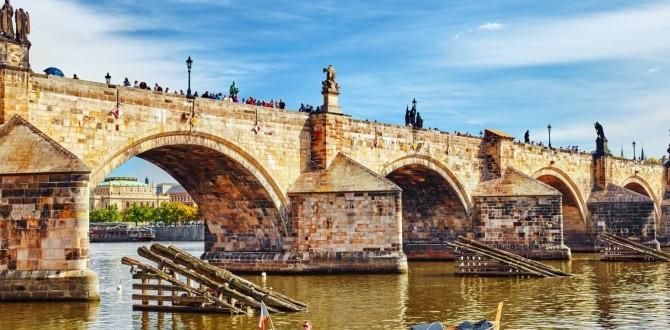Asuncion Public Transport Cheat Sheet: Your Genius Guide to Effortless City Navigation. Master Asuncion’s bus system with ease, from understanding routes and fares to riding like a local. This guide simplifies public transport, making your exploration comfortable and budget-friendly.
Navigating a new city can sometimes feel like a puzzle, especially when it comes to public transport. Asuncion, Paraguay’s vibrant capital, has a bus system that’s the heartbeat of the city. It’s how locals get around, running on a network that spans almost every corner. But for newcomers, it can seem a little daunting. Where do you start? How do you know which bus to take? Don’t worry, I’ve got your back! This guide is designed to make Asuncion’s public transport simple and stress-free. Get ready to hop on with confidence!
Understanding Asuncion’s Public Transport: The Basics
Asuncion’s primary mode of public transportation is its extensive bus network. These aren’t just buses; they’re the lifeblood of the city, connecting neighborhoods, markets, and key attractions. Managed by various private companies under government regulation, the system is constantly evolving but remains remarkably efficient for its size.
The buses themselves vary. You’ll see modern, air-conditioned coaches on longer routes, alongside older, more utilitarian vehicles. One thing is consistent: they are a fantastic way to experience authentic Asuncion life and save money. It’s a true local experience, full of sights, sounds, and the general buzz of the city. Getting to grips with it is key to unlocking a more immersive travel adventure.
Types of Buses and Their Routes
Asuncion’s bus system can be broadly categorized by the color of the bus and the routes they serve. This color-coding is your first clue to understanding where a bus is headed. The main categories are:
- Orange Buses: These typically serve inner-city routes, connecting various neighborhoods within Asuncion. They are the most frequent and cover a dense area.
- Yellow Buses: Generally, these operate on inter-municipal routes, meaning they travel to and from surrounding towns and cities that are part of the Greater Asuncion metropolitan area.
- Green Buses: These often indicate routes heading towards more distant suburbs or specific industrial/commercial zones.
- White Buses (Often labeled with route numbers): These can be a mix, sometimes serving specific, dedicated routes within the city or connecting to key transport hubs.
Each bus will have its route number clearly displayed, usually on the front and side. Alongside the number, you’ll often find the main destination or streets it passes through printed on signs. This visual information is crucial for beginners.
Key Bus Terminals and Hubs
Understanding where to catch your bus is as important as knowing the route. Asuncion has a few central points where many routes converge:
- Terminal de Ómnibus de Asunción (TPA): This is the main bus terminal and a huge hub. While it’s primarily for intercity and international buses, many urban buses also stop here or have routes originating from its vicinity. It’s a good starting point if you’re unsure.
- Plaza de la Democracia: A bustling area downtown where many buses stop. It’s a central point for many inner-city orange and white routes.
- Mariscal Estigarribia Avenue: This is a major artery and a vital corridor for numerous bus routes, especially those heading out of the city center towards residential and commercial areas. You’ll find many bus stops along this avenue.
Haggle for souvenirs at the Mercado 4, a vibrant market, and you’ll likely find many buses connecting from its surroundings back into the city center or various neighborhoods.
Your Step-by-Step Guide to Riding Asuncion Buses
Ready to dive in? Riding the bus in Asuncion is straightforward once you know the drill. Here’s how to do it like a pro.
- Identify Your Route: Before you even head out, try to find out which bus route number you need. You can use online mapping tools, ask your accommodation, or look for signs at bus stops. Search for the destination you want to reach and see which buses serve it.
- Head to a Bus Stop: Bus stops are marked with a sign, often a simple pole with a bus symbol. Some stops are mere suggestions on the side of the road, while others might have small shelters. Be patient, as buses can vary in their adherence to strict schedules.
- Board the Bus: When your bus arrives, check the route number and destination displayed. Stand to the side to let passengers disembark first. Then, board through the front door.
- Pay Your Fare: The fare is typically paid to the bus collector (cobrador), who sits near the driver. Have small denominations of Paraguayan Guaraní (PYG) ready. Fares are generally fixed for certain zones or routes.
- Find a Seat or Hold On: Buses can get crowded, especially during peak hours. Take a seat if available, or find a sturdy handrail to hold onto.
- Signal Your Stop: To get off, you usually need to signal the driver or collector. This can be done by pressing a buzzer (if available) or by politely calling out “¡Parada!” (stop!) as you approach your desired stop.
- Alight Safely: Exit through the middle or rear doors, as indicated by the bus.
Fares and Payment: What You Need to Know
Budgeting for transportation is crucial, and Asuncion’s buses are incredibly affordable. Here’s what to expect regarding fares:
Typical Fare Prices
Fares are generally quite low for inner-city routes. You can expect to pay anywhere from 2,000 to 4,000 PYG for most trips within Asuncion proper. Longer routes or those extending into surrounding municipalities might cost slightly more, perhaps up to 6,000 PYG. It’s always best to have smaller bills and coins.
Payment Methods
Payment is almost exclusively in cash, using Paraguayan Guaraní (PYG). The collector (cobrador) will typically ask for your payment as you board or shortly after. They do not typically give exact change for very large bills on short trips, so having smaller denominations is key. There isn’t a widespread electronic payment system for these local buses yet.
It’s a good idea to carry a small pouch with your daily bus money to avoid having to pull out a large wad of cash. When traveling with adults or children needing specialized protection like adult incontinence products – it’s always wise to be doubly prepared with your personal items for comfort and peace of mind during your journey.
Navigating with Apps and Online Resources
While dedicated apps for Asuncion’s local bus routes aren’t as ubiquitous as in some other global cities, technology can still be your friend. Online mapping services are increasingly helpful.
Using Google Maps or Similar Tools
Google Maps is surprisingly effective for Asuncion. Enter your starting point and destination, and then select the public transport option. Google Maps will often suggest bus numbers, directions to the nearest stops, and an estimated travel time. It’s an excellent tool for initial planning and on-the-go navigation.
You can also find route information on local transport forums or community websites. For example, services like the National Directorate of Public Transport (DINATRAN), though primarily a regulatory body, might offer some general route planning resources for the country.
Offline Maps and Phrasebooks
For areas with spotty internet, consider downloading offline maps of Asuncion via Google Maps. Also, having a basic Spanish phrasebook or translation app can be extremely helpful. Knowing phrases like “one ticket to…” (“un pasaje a…”) or “where is the stop for…” (“¿dónde está la parada para…”) will go a long way.
Tips for a Comfortable and Safe Bus Ride
Your comfort and safety are paramount. Asuncion’s buses are generally safe, but a few practical tips will enhance your experience.
General Safety Advice
- Be Aware of Your Surroundings: Like in any city, be mindful of your belongings, especially in crowded buses and terminals. Keep valuables secure and out of sight.
- Trust Your Instincts: If a situation feels uncomfortable, move to a different part of the bus or consider waiting for the next one.
- Travel During Daylight Hours: If possible, plan your journeys to avoid very late-night travel.
- Keep Documents Secure: Carry copies of your passport and important documents separately from the originals.
Comfort Enhancements
- Carry Water and Snacks: Especially for longer journeys, having water is essential. Small, non-messy snacks can also be useful.
- Consider the Time of Day: Buses are busiest during morning and evening rush hours. Traveling outside these times can offer a more relaxed experience.
- Air Conditioning: Many modern buses have air conditioning, which is a godsend during Asuncion’s warm climate. If you’re sensitive to AC, carry a light shawl or jacket.
- Diaper Considerations for Families:** If you’re traveling with children, especially those who might be potty training or need extra protection, having convenient and comfortable child pull-ups or diapers readily accessible in your day bag is a huge stress-saver. It ensures any unexpected needs are met easily, keeping your little ones comfortable and allowing you to focus on the sights. Similarly, adults may find adult briefs or protective underwear provide confidence and security for long journeys or unexpected delays.
- Know Basic Spanish Phrases: While many people are friendly and may speak some English, knowing a few basic Spanish phrases can greatly improve your interactions and make asking for help much easier.
Bus Etiquette: Riding Like a Local
Understanding local customs makes your journey smoother and shows respect. Here are a few points of bus etiquette in Asuncion:
- Offer Seats to the Elderly, Pregnant, or Disabled: This is a universal sign of courtesy.
- Keep the Aisle Clear: Don’t obstruct the aisle with bags or by standing in the wrong place.
- Keep Noise Levels Down: While lively conversations are common, try to keep music or loud calls to a minimum.
- Dispose of Trash Properly: Use designated bins at terminals or wait until you reach your destination.
Comparing Bus Travel to Other Options
Asuncion offers a few transportation alternatives, each with its pros and cons, especially when compared to the bus system.
| Transportation Method | Pros | Cons | Best For |
|---|---|---|---|
| Local Buses | Extremely affordable, extensive network, authentic local experience. | Can be crowded, routes can sometimes be confusing, not always air-conditioned (on older buses). | Budget travelers, exploring neighborhoods, short to medium distances. |
| Taxis/Ride-Sharing Apps | Convenient, door-to-door service, air-conditioned, good for groups or heavy luggage. | More expensive than buses, traffic can cause delays, need to ensure app works or find legitimate taxis. | Direct travel to specific locations, late-night travel, convenience. |
| Tuk-Tuks | Quirky, good for short distances in certain areas, accessible for quick hops. | Limited range, safety can be a concern on faster roads, fares need negotiation. | Very short trips within specific neighborhoods. |
| Walking | Free, healthy, allows for spontaneous discovery, great for exploring central areas. | Limited range, weather-dependent, not practical for longer distances or reaching distant attractions. | Exploring the city center, short distances between attractions. |
For a real taste of local life and the most budget-friendly way to get around, Asuncion’s bus network is unmatched. It simply requires a little planning and a willingness to embrace the adventure.
Frequently Asked Questions About Asuncion Public Transport
How do I know if I’m on the right bus?
Check the route number displayed on the front and sides of the bus. Also, confirm the main destination or key streets listed on the sign match your intended route. If in doubt, ask the bus collector (cobrador) by showing them your destination name or address.
Is Asuncion’s public transport safe?
Yes, generally it is safe. However, like in any urban environment, it’s wise to be aware of your belongings, especially during peak hours when buses are crowded. Keep valuables secure and out of sight.
How much does a bus ticket cost in Asuncion?
Fares vary slightly by route but typically range from 2,000 to 4,000 Paraguayan Guaraní (PYG) for inner-city trips. Longer inter-municipal routes might cost a bit more.
Can I pay with a credit card or app?
No, payment is almost exclusively in cash (Paraguayan Guaraní – PYG). It’s best to have smaller denominations ready when you board.
What’s the best way to find my route?
Using online mapping services like Google Maps is highly recommended. Enter your destination and select the public transport option. You can also ask at your accommodation for specific bus numbers to take.
When is the best time to ride the bus?
For a less crowded experience, try to avoid the morning (roughly 7-9 AM) and evening (roughly 5-7 PM) rush hours. Mid-day and weekends are generally more relaxed.
What if I don’t speak Spanish fluently?
While many people are friendly, knowing a few basic Spanish phrases like “Hola” (Hello), “¿Cuánto cuesta?” (How much does it cost?), and “Adiós” (Goodbye) will be very helpful. Having a translation app or phrasebook handy is also a great idea.
Conclusion: Your Asuncion Adventure Awaits!
Asuncion’s bus system, while simple in concept, opens up a world of authentic experiences. By understanding the route colors, having small change, and utilizing tools like Google Maps, you’re well-equipped to navigate the city like a seasoned traveler. Remember that the true joy of exploring Asuncion lies not just in the destinations, but in the journey itself. Embrace the local vibe, enjoy the snippets of everyday life you witness from your seat, and don’t be afraid to ask for help. Your comfort and confidence are the most important travel essentials, and mastering public transport is a big step towards a stress-free and memorable visit. So, hop on, explore, and let Asuncion reveal its wonders to you, one bus ride at a time!








